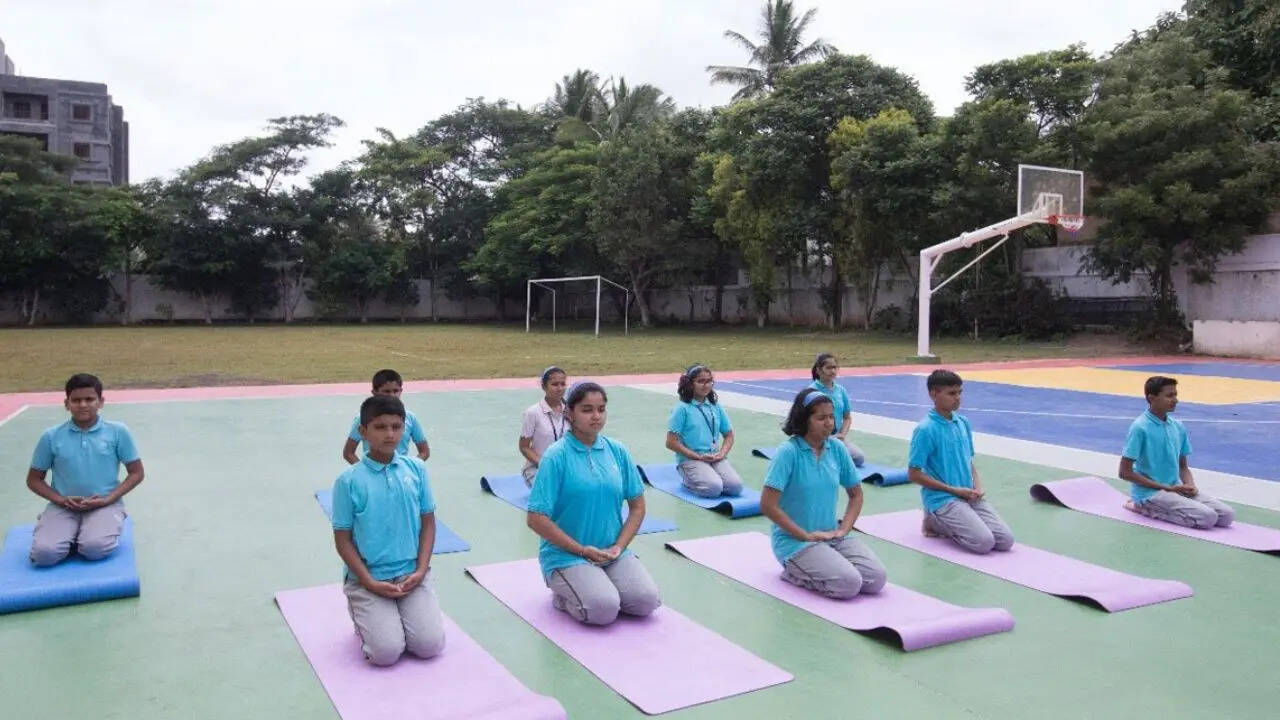Summary
As part of International Yoga Day celebrations, Andhra Pradesh’s School Education Department conducted the Yogandhra programme across 61,266 schools, involving nearly 60 lakh students, teachers, parents,
Source: Times Now

AI News Q&A (Free Content)
Q1: What is the significance of the International Yoga Day and how did it originate?
A1: International Yoga Day is celebrated globally on June 21st, following its adoption by the United Nations in 2014. The initiative was led by India's Prime Minister Narendra Modi, emphasizing the benefits of yoga for physical and mental well-being. It received broad support from 177 nations in the UN General Assembly, marking its first celebration in 2015. The day aims to promote the ancient practice of yoga worldwide for holistic health.
Q2: How does the Yogandhra program in Andhra Pradesh contribute to International Yoga Day?
A2: The Yogandhra program in Andhra Pradesh, conducted by the School Education Department, involved 60 lakh students, teachers, and parents across 61,266 schools as part of International Yoga Day celebrations. This large-scale participation highlights the state's commitment to integrating yoga into education, promoting wellness and mindfulness among young students.
Q3: What are the benefits of yoga for students' mental and physical health?
A3: Yoga provides numerous benefits for students, including improved concentration, reduced stress, and enhanced physical flexibility. Studies have shown that regular yoga practice can lead to better academic performance, increased self-esteem, and a healthier lifestyle.
Q4: What does recent research say about the role of yoga in enhancing happiness?
A4: Recent studies, such as those analyzing Twitter data, indicate a positive relationship between yoga practice and increased happiness. By measuring yoga activity levels and users' emotional states, researchers found evidence suggesting that yoga can lead to a happier disposition, supporting the notion that it enhances overall well-being.
Q5: How is technology being utilized in yoga practice today?
A5: Technological advancements have led to innovative methods in yoga practice, such as real-time recognition of yoga poses using computer vision. This technology allows for self-assistance in posture correction, enhancing the accuracy and effectiveness of yoga practice. Such innovations make yoga more accessible and user-friendly, encouraging wider adoption.
Q6: What are the findings of the study on yoga's impact on well-being in Rwanda?
A6: A study in Rwanda explored the psychosocial benefits of a yoga program, showing significant improvements in self-regulation, self-efficacy, and personal growth among participants. The program, delivered through trauma-informed methods, demonstrated yoga's potential to enhance well-being, indicating its applicability across diverse populations.
Q7: How has yoga evolved from its traditional roots to modern practices?
A7: Yoga has evolved significantly from its traditional meditational roots to include various physical postures. The modern practice of yoga, influenced by Indian nationalism and Western fitness trends, has become more energetic and commercial. This evolution has made yoga widely popular, integrating it into global wellness practices.
References:
- International Day of Yoga - Wikipedia
- Real-time Recognition of Yoga Poses using computer Vision for Smart Health Care - Arxiv
- Effects of a Yoga-Based Program on Well-Being and Traumatic Stress: A Noncontrolled Trial in Rwanda, Africa - Pubmed
- Postural yoga in India - Wikipedia





